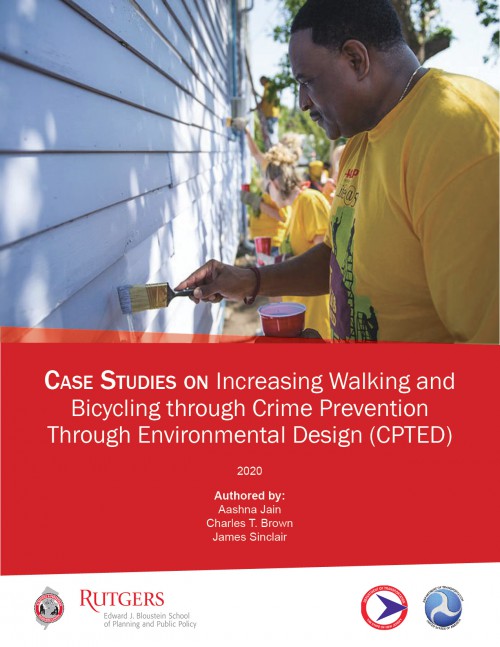Crime Prevention Through Environmental Design (CPTED) has been an important subject matter for urban planners, architects, and urban designers. Recently, transportation planners have also been interested in this research because environmental design of spaces can help increase walking and bicycling trips. CPTED can be referred to as the effective modification of the built and social environment to improve community safety and quality of life (Jeffrey, 1971). Utilizing CPTED approaches to encourage walking and bicycling is based on the premise that people are more likely to walk or bicycle in areas that are safe or are perceived to be safe. In this stream of research, it is not only the traffic safety measures that are important but also design and social factors such as lighting; placement of fenestrations; landscaping; and social programming that can help provide safe bicycling and walking opportunities.
Past research has identified crime, fear of crime, and disorder as some of the major barriers to walking and bicycling in communities across the country and the state of New Jersey (New Jersey Bicycle and Pedestrian Resource Center, 2017; New Jersey Safe Routes to School Resource Center, 2017). To tackle them, countless local and national organizations such as the United States Department of Transportation
(USDOT), Centers for Disease Control and Prevention (CDC), New Jersey Safe Routes to School (SRTS), local police departments, and non-profits recommend incorporating CPTED in the design of streets and open spaces. However, few bicycle and pedestrian policy and planning, safe routes to school, transit, parks and open spaces, and everyday designation initiatives in New Jersey have implemented CPTED for this purpose. One of the implemented efforts involved creating a detailed CPTED plan for six high crime corridors in the City of Paterson in New Jersey.
This report looks at four case studies to identify best practices for implementing CPTED to increase bicycling and walking opportunities. These case studies focus on CPTED approaches to improve safety on streets and roadways, parks and open spaces, trails, and through community engagement and leadership. The case studies were selected based on project scope and timeframes, their extent of implementation, availability of data and information, and are as follows:
- The City of Paterson CPTED Project in NJ
- Lower Kinnear Park Enhancement Plan – Seattle, WA
- The Bloomingdale Trail – Chicago, IL
- The SafeGrowth/CPTED Project – New Orleans, LA
The second section of the report includes a brief history and overview of first-, second-, and third-generation principles of CPTED, and the next four sections are dedicated to analyzing CPTED approaches to streets and roadways (Section 3), parks and open spaces (Section 4), trails (Section 5), and through community engagement and leadership (Section 6). Each of these sections includes a detailed literature review of the latest academic and professional publications on CPTED outcomes, crime/fear of crime, and walking and bicycling in that space, as well as an in-depth case study highlighting project methodologies, implemented strategies, results and key takeaways. In addition to the data and resources available online, the researchers conducted 45-minute interviews with leading professionals involved in the projects for more information. Lastly, the final section of the report summarizes the best practices and findings for implementing CPTED to increase bicycling and walking opportunities.
Read full report: Case Studies on Increasing Bicycling & Walking through CPTED (2020)
New Jersey Bicycle and Pedestrian Resource Center. (2020). Case Studies on Increasing Bicycling and Walking through Crime Prevention Through Environmental Design (CPTED). Retrieved from https://njbikeped.org/portfolio/case-studies-on-increasing-bicycling-walking-through-cpted/

